I didn’t write yesterday because honestly, I was just getting myself acclimated to what it means to live out of my rig. I say “out of” rather than “in,” because when your main living space consists of a 17′ x 7′ box that offers only a not-quite-three-foot aisle that runs from the bed in the front to the bathroom in the back (and literally no place else to stand or walk), you quickly realize that the majority of your motion activity needs to be outside.
There’s also the reality that I have one small, not-very comfortable place to sit inside other than atop my bed. And no real table to eat or work at. I have just one of those rolling hospital-type over-bed tables. It’s about 30″ wide and 18″ deep, just enough to hold my 26″ desktop iMac, keyboard and trackpad, and three peripheral drives.
If I’m very creative and patient, I am able to fit maybe a cereal bowl and drinking glass on the far left edge. But that makes me nervous, given the proximity to my keyboard and the good chance that sooner or later, the two will meet in a way that is injurious to the electronic member.
But for now, because I don’t have to work this Labor Day weekend, that’s not an issue. And for breakfast, I ate at this table quite comfortably. For lunch and dinner, though, I’ve been using the fold-up camp chair I bought, which has a pull-up side table. Not only is it more comfortable, but it allows me to enjoy outside the only multiple-sunny-days-in-a-row I can remember this year, which I desperately need.
Weather matters.
I have long suffered from Seasonal Affective Disorder (appropriately acronym-ed as SAD), which causes serious depression when there’s a lack of sunshine. As you might imagine, the endless drear and snow and rain since the beginning of this year has been just brutal on my mood and outlook. If it weren’t for the need to stay busy working on my rig and being able to look forward to my upcoming adventures on the road, I honestly don’t know what would have happened to me this year.
But right now, the sun is shining, I’m in a beautiful, peaceful campground with nice neighbors all around (but not too close), and I’m sincerely enjoying it all. And feeling truly grateful that this rare bout of fair weather came when I had my first camp-out scheduled.
My New Normal
One of the big things I’ve become aware of is that I am going to have to start thinking a bit differently about the structure of my days. At the apartment and back in my house days—like most people—I would get up in the morning, take care of daily hygiene, feed Idgie and the ferals, eat breakfast (most likely on a TV tray in front of the TV), then go into the office to work.
I never gave a thought to the mechanical operation of the building around me, because it just happened. Plumbing, heating, lighting, air conditioning…at most, all I had to do was flip a switch, turn a knob or control dial or faucet handle, and there it was. And I realize now how much we take these functions for granted.
But living in an RV requires that I pay very close attention to them every day, around the clock. I need to always plan for having access to shore power or some other electric source, because the type of batteries I have can only be run down to just above 50% of their capacity before being damaged. That’s why I have two, as you may remember from the electrical install posts.
In the rig, the mechanical controls are much the same. But being able to count on desired and expected operation when you use them is anything but.
Electrical and Lighting
If you want to have dependable light, you had better pay attention to plugging in your electrical cord when you get to your campground. My host did that for me when I got here, but you can bet I went out there and watched him doing it, because I’ve never plugged this unit in before now.
It’s just like plugging into a wall socket in your house, only my rig uses 30 amp power. That plug is round and has a funky configuration of metal posts that is unfortunately similar to the 220 volt plug you have on your clothes dryer. I say “unfortunately,” because I’ve heard of people mistaking outdoor dryer outlets as 30 amp, with sad consequences.
But in a campground, the two common voltages are 30 and 50 amp, with the latter being more common in larger RVs such as big Class A’s and fifth wheels. I could see the campground owner being careful to plug my rig into the right one. It might seem kind of redundant caution, since the two different amperage sockets are clearly different. But all it takes is one of those posts to go into the wrong hole, and you have a big problem.
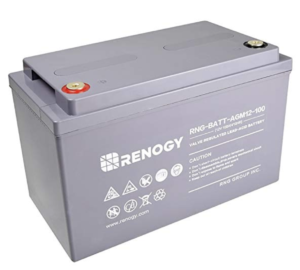 Now, most built-in lighting in most RVs is of the 12-volt variety, meaning it runs off of the house battery. The trailer’s wiring is such that these batteries are charged both when I drive, through a wire that connects into my Jeep’s onboard charging system, as well as when I’m plugged into what’s referred to as “shore power” through being plugged into the power pedestal in the campground.
Now, most built-in lighting in most RVs is of the 12-volt variety, meaning it runs off of the house battery. The trailer’s wiring is such that these batteries are charged both when I drive, through a wire that connects into my Jeep’s onboard charging system, as well as when I’m plugged into what’s referred to as “shore power” through being plugged into the power pedestal in the campground.
But other electrical items and appliances, such as my toaster, hair dryer, microwave oven and—most importantly, my desktop iMac and peripherals—require 110-volt power. That means directly powered by that pedestal plug-in. I’m most hyper-aware that I will only be able to use these items when I have shore power, until I get my solar power system installed.
Beginning next week, I will actually be living at the front of a friend’s property in Upper Black Eddy, PA. Ironically, it’s basically just at the top of the hill from the house I lived in for 15 years in Ferndale. My host will allow me to park in front of her garage for free, paying her only for the electricity I use through plugging into her garage outlet. Happily, that garage was once used as her husband’s workshop, so it’s been wired for heavy-duty equipment usage. This will allow me to use an adapter to go from the 30 amp cord in my trailer to the 15 amp service most homes are wired with, without blowing a circuit breaker.
 But heavy on my mind is how I will power my computer and 110 appliances once I get on the road before I have solar power. I have a membership with Thousand Trails, a discount camping program that allows members to stay free at a number of their network campgrounds, once dues have been paid. But those campgrounds are primarily located around the edges of the country, and my trek to the Southwest for the winter will be solidly through the middle of it.
But heavy on my mind is how I will power my computer and 110 appliances once I get on the road before I have solar power. I have a membership with Thousand Trails, a discount camping program that allows members to stay free at a number of their network campgrounds, once dues have been paid. But those campgrounds are primarily located around the edges of the country, and my trek to the Southwest for the winter will be solidly through the middle of it.
 That means I’ll need to save up enough money not only to give me enough gas to make the trip, but also to pay for non-TT campgrounds along the way. Once I have solar power, I should be able to “boondock,” or stay completely off-grid on public lands and in overnight parking lots as needed. But till then, I’m hoping to be able to save some money on camping fees with a membership in Passport America. This membership lets me save 50% on sites in participating campgrounds, and there are a lot of them in our nation.
That means I’ll need to save up enough money not only to give me enough gas to make the trip, but also to pay for non-TT campgrounds along the way. Once I have solar power, I should be able to “boondock,” or stay completely off-grid on public lands and in overnight parking lots as needed. But till then, I’m hoping to be able to save some money on camping fees with a membership in Passport America. This membership lets me save 50% on sites in participating campgrounds, and there are a lot of them in our nation.
Water
I also must plan for water. In most campgrounds, there is a hookup for potable (drinkable) water. But eventually, when I boondock or just stay overnight in a parking lot between camps, I will have to bring enough water along with me to use for everyday needs, without having so much onboard that it adds significantly to my rig’s weight. I’m already towing at the top of my capacity, so even 50 lbs. can make a big difference in what I can safely pull.
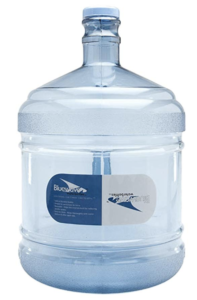 So I carry a three-gallon plastic bottle, the kind you can put in an office water cooler. It sits on my floor (yes, in that not-very-wide aisle) between my fridge and the bathroom. I purchased a hand pump from Amazon that sits on top of it. It allows me to simply give the top large button a push, and it brings up a nice flow of water through a tube that runs from the top mechanism into the reservoir below.
So I carry a three-gallon plastic bottle, the kind you can put in an office water cooler. It sits on my floor (yes, in that not-very-wide aisle) between my fridge and the bathroom. I purchased a hand pump from Amazon that sits on top of it. It allows me to simply give the top large button a push, and it brings up a nice flow of water through a tube that runs from the top mechanism into the reservoir below.
 This takes care of drinking water for Idgie and me, when I can’t hook up my rig’s supply hose to an outside spigot. I have learned from my online research that I can refill it as needed at supermarkets—especially WalMart Supercenters—that offer Glacier and other water brand filling stations outside their buildings.
This takes care of drinking water for Idgie and me, when I can’t hook up my rig’s supply hose to an outside spigot. I have learned from my online research that I can refill it as needed at supermarkets—especially WalMart Supercenters—that offer Glacier and other water brand filling stations outside their buildings.
Sewer Disposal
The last of the mechanical services I need to think about is how to dispose of my bathroom waste. In a house or apartment, you just use the toilet, flush, and forget it. But everything you create in an RV has to either be stored or gotten rid of. In this case, it’s both, with storage being temporary until disposal is possible.
In my rig, I have what’s called a black tank. It’s actually a black plastic tank that holds what I flush down my toilet until I can empty it into a septic tank. Those are available both at campgrounds and at small areas called dump stations. You can find these dump stations in campgrounds with and without sewer hookups at individual sites, and also at some gas stations and truck stops on the road.
Generally, if you’re a paid camper at a campground, use of these is free. On the road, use of a dump station usually runs somewhere between $10-15. This really brings home how much we take for granted the ability to simply flush our waste in a stationary location. Few people think about the cost of storing or processing such waste. On the road, I’m sure I will become very aware of it, since it’s something I’ll have to plan and budget for. This campground is the first time I will have to use it.
Yesterday, I got up after crashing, exhausted, late the night before after we arrived. I fed Idgie, had breakfast myself, then went outside to take a look at the place where I had to hook up my corrugated, flexible black tank hose to the disposal port in the ground. This hose is 4″ in diameter, just like solid plumbing pipes in a house or other building. I guess this is the size agreed upon to be able to handle solid human waste.
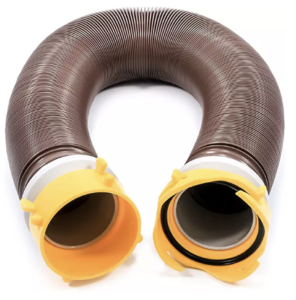 This hose has these hard plastic collars on the end that are rather ingeniously designed to connect to the rig using a quarter-turn, in which hook-like tabs grab onto several pegs that stick up from the connection.
This hose has these hard plastic collars on the end that are rather ingeniously designed to connect to the rig using a quarter-turn, in which hook-like tabs grab onto several pegs that stick up from the connection.
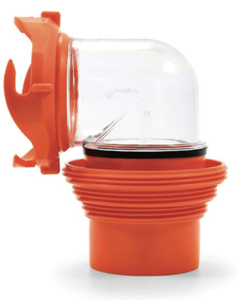 On the other end is a similar collar that connects to a plastic elbow, which can be either clear (best, so you can see if everything has moved through before removing it from the port) or translucent. On the other end of the elbow is a funnel-like fitting that seats—hopefully rather tightly—into the ground portal.
On the other end is a similar collar that connects to a plastic elbow, which can be either clear (best, so you can see if everything has moved through before removing it from the port) or translucent. On the other end of the elbow is a funnel-like fitting that seats—hopefully rather tightly—into the ground portal.
I say hopefully, because you don’t want that stuff splashing back out. But from what I understand, not every campground has such tight fittings. They’re made of concrete generally, and older ones have gotten chipped, worn or otherwise out of round, so the funnel doesn’t always fit snugly.
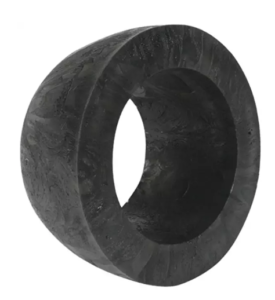 In such instances, I learned from my longtime camper friend Tom, you need to carry with you a thick, heavy, black rubber semi-conical gasket called a “doughnut.” This you put into the top of the portal, then fit the funnel into it. I haven’t needed to use that yet, but I did buy one and keep it in the bag with my hoses in case I do.
In such instances, I learned from my longtime camper friend Tom, you need to carry with you a thick, heavy, black rubber semi-conical gasket called a “doughnut.” This you put into the top of the portal, then fit the funnel into it. I haven’t needed to use that yet, but I did buy one and keep it in the bag with my hoses in case I do.
The black tank hose is generally 10-15 feet long, which is sufficient for most camping sites. But for those where it won’t reach from the rig’s black tank outlet to the dump portal, you have to carry an extension. Right now, I don’t have one of those yet, so I’m lucky my first campsite had a close location.
So that’s a lesson in the menial but very important considerations of accommodating the needs of daily life in an RV. And it’s a lot of what I thought about yesterday. Today, I’m actually relaxing and playing with Idgie (you can see her little outside playpen in the photo), and getting to know some of my neighbors.
Random joys
I’ve met a young couple from Germany who are living here while the wife works as a professor at Princeton University. They have a cute little boy, and are camping out of the back of their pickup truck. They sleep in a small family-size tent. They are on a hill opposite my site, and I’ve enjoyed watching them have breakfast, read, and play with their little guy on the campground’s swingset.
I talked with the woman a bit and she told me their story. She also expressed such joy at being able to come here and experience Nature and to expose their little son to the same joys. He saw Idgie over here and asked his mom if he could pet her. I didn’t understand his request because he was speaking in German. So his mom took the opportunity to introduce him to the English word, “cat.”
I so enjoyed watching his little face light up when he first saw Idgie, and his gentleness in petting her. I could tell he was excited and having difficulty controlling his urge to jump around so he wouldn’t scare her. It was really a sweet moment, and I think this is probably an example of one of the simple delights of this lifestyle. It certainly felt like a real blessing to me. I only wish I would have thought to take some photos so I could include them here. I’ll have to get better at that.

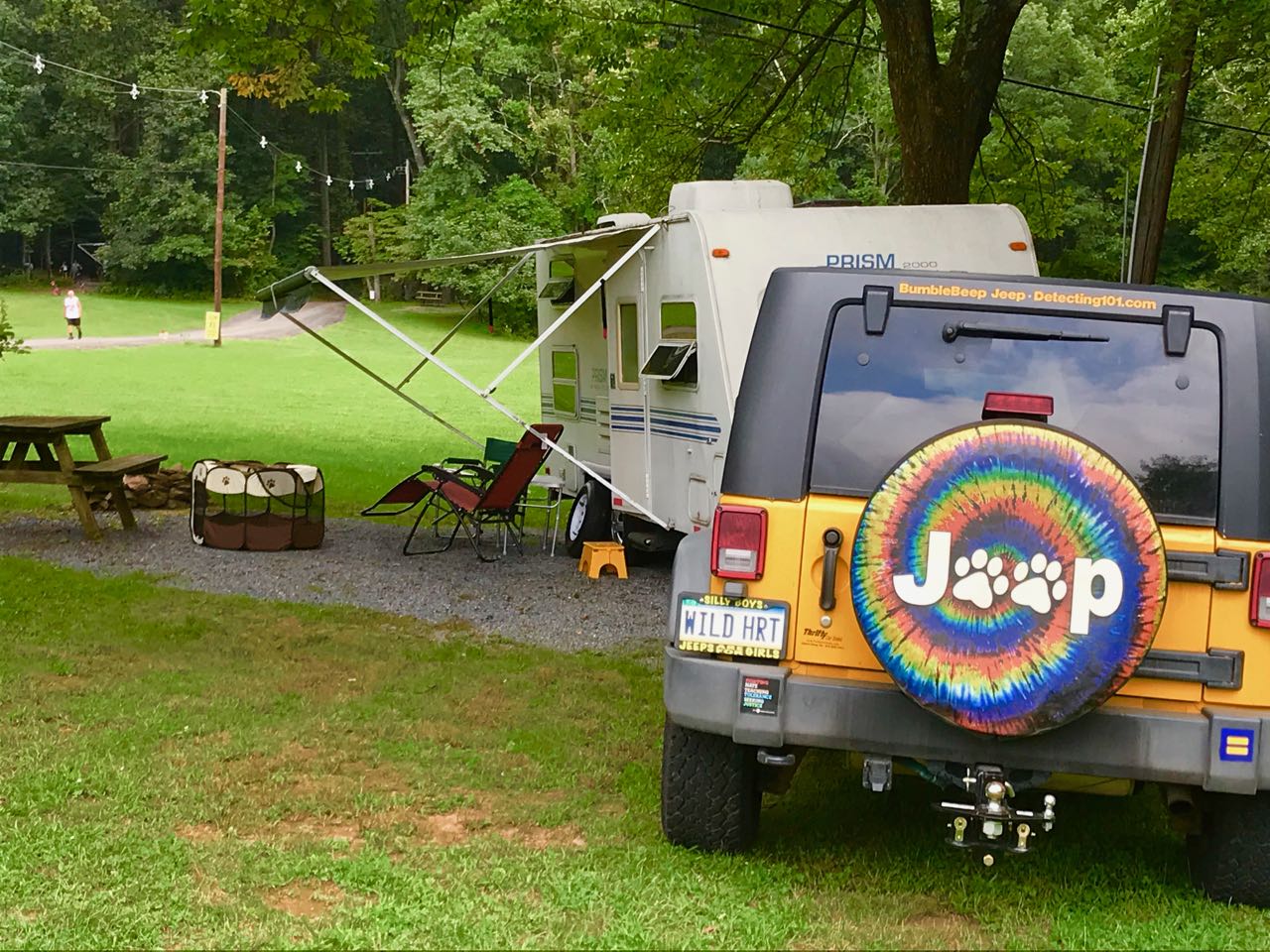
Recent Comments